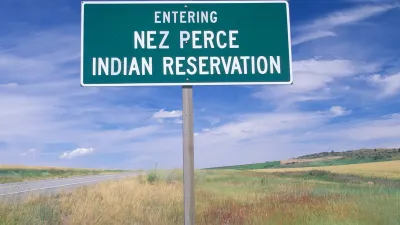Paso Robles -- one of California's premier wine-producing regions -- is on the verge of running out of water, pitting wine producers against rural residents. At stake is the possible future of the region.

The Paso Robles region of California has development a global reputation for its wines, thanks in great part to the hot weather and soil conditions which are remarkably similar to the famous grape-growing Rhone region in France. The wine making industry contributes to California Central Coast's $1.2-billion local tourism industry.
"This surge in popularity has caused wine grape acreage in the county to more than triple in 15 years to 36,550 acres — and there are estimates of up to 8,000 acres more being prepared. With little to no rain on much of that land, drip irrigation is widespread." But demand for water to support the additional growing has reached a critical point, and exceeded the ability of the region's aquifer.
"On one side are wine producers, who feel besieged and undeserving of all the blame. On the other are rural residents, who worry over their housing values and ask how soon before their faucets cough dust?"
A recent editorial in the Santa Maria Times sums up the issue:
"Despite the fact that vineyards require only a fraction of the water used to grow some other crops, non-farming residents in and around Paso Robles are going to the mat with grape growers. Legal action is a distinct possibility, and the water-use question has been tossed into the lap of the [San Luis Obispo] County Board of Supervisors, whose members, frankly, don't know which way to turn. Growers have made proposals to help ease tensions -- without success -- including connecting to the State Water Project, so groundwater use on crops can be reduced. The problem with that strategy is climate change is supposed to significantly reduce rainfall and snowmelt in the coming years, which would effectively reduce the amount of water the state system could deliver."
A five-part series by the San Luis Obispo Tribune earlier this year outlines the stakes:
"Deep beneath the peaceful countryside, the North County’s primary water source is facing an unprecedented crisis... Over the past 30 years, levels in the underground aquifer have dropped precipitously, 80 to 100 feet or more in some areas. These declines pose a profound threat for the region, residents and economy. Rural homeowners are facing the prospect of losing their homes because their wells are going dry. Vineyards could lose access to a crucial resource. And the crisis in the groundwater basin is only expected to get worse — much worse."
FULL STORY: In Paso Robles, vineyards' thirst pits growers against residents

Alabama: Trump Terminates Settlements for Black Communities Harmed By Raw Sewage
Trump deemed the landmark civil rights agreement “illegal DEI and environmental justice policy.”

Planetizen Federal Action Tracker
A weekly monitor of how Trump’s orders and actions are impacting planners and planning in America.

The 120 Year Old Tiny Home Villages That Sheltered San Francisco’s Earthquake Refugees
More than a century ago, San Francisco mobilized to house thousands of residents displaced by the 1906 earthquake. Could their strategy offer a model for the present?

Indy Neighborhood Group Builds Temporary Multi-Use Path
Community members, aided in part by funding from the city, repurposed a vehicle lane to create a protected bike and pedestrian path for the summer season.

Congestion Pricing Drops Holland Tunnel Delays by 65 Percent
New York City’s contentious tolling program has yielded improved traffic and roughly $100 million in revenue for the MTA.

In Both Crashes and Crime, Public Transportation is Far Safer than Driving
Contrary to popular assumptions, public transportation has far lower crash and crime rates than automobile travel. For safer communities, improve and encourage transit travel.
Urban Design for Planners 1: Software Tools
This six-course series explores essential urban design concepts using open source software and equips planners with the tools they need to participate fully in the urban design process.
Planning for Universal Design
Learn the tools for implementing Universal Design in planning regulations.
Clanton & Associates, Inc.
Jessamine County Fiscal Court
Institute for Housing and Urban Development Studies (IHS)
City of Grandview
Harvard GSD Executive Education
Toledo-Lucas County Plan Commissions
Salt Lake City
NYU Wagner Graduate School of Public Service





























